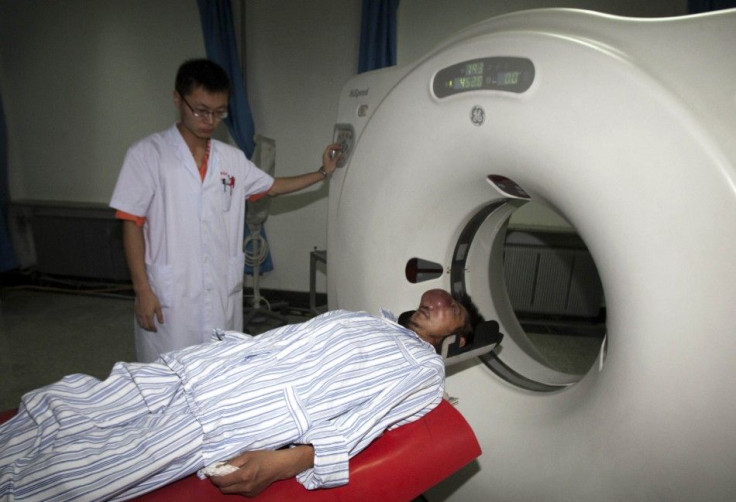CT Scans to Spot Appendicitis Up Sharply in U.S.

The number of adults and children getting CT scans to diagnose appendicitis has shot up since the 1990s, a new study finds -- raising questions about whether the high-tech X-rays are being overused.
In the past couple of decades, the number of Americans receiving CT (computed tomography) scans has soared, reaching 72 million in 2007.
The high-resolution X-rays are used to diagnose specific injuries and illnesses, and, increasingly, to screen for disease.
While the technology can be very useful in getting a clear picture of certain medical conditions, CT also delivers a much higher dose of radiation than old-fashioned X-rays do. So experts are increasingly concerned about widespread, and in some cases unnecessary, use of the scanners.
In the new study, researchers found that across U.S. emergency departments, the percentage of adult appendicitis patients who were diagnosed using CT rose from just 6 percent in 1996, to 69 percent in 2006.
Among children, that figure went from zero to 60 percent, the researchers report in the Annals of Emergency Medicine.
Dr. Daniel Tsze, the lead researcher on the study, said he could not say whether those recent numbers are too high because CT is the most accurate test for appendicitis. That is likely one major reason for the dramatic upswing in its use, he told Reuters Health.
But there is no evidence yet that doing CT scans improves patients' outcomes, said Tsze, a pediatrician at Columbia University Medical Center in New York. If it does, then the downsides of radiation exposure and cost could be worth it.
With appendicitis, we just don't know yet, Tsze said.
Appendicitis is an inflammation of the appendix caused by a blockage. Treatment almost always involves removing the appendix -- a small pouch attached to the colon with no known function -- in order to prevent it from rupturing. A ruptured appendix spills infectious material into the abdomen, which can cause dangerous complications.
Sometimes, patients' abdominal pain and other symptoms are so clearly caused by appendicitis, they can go right to surgery, Tsze said. In other cases, it's not so obvious, and a CT scan could help get to the bottom of the problem.
There are definitely situations where it's indicated, Tsze said. But I don't think it's indicated in every case.
There is a move, according to Tsze, to encourage more judicious use of CT in diagnosing appendicitis. A lot of people are pushing for a combination of strategies, he said.
That means taking a thorough look at patients' symptoms and medical history. If there are questions about whether abdominal pain is actually caused by appendicitis, then further tests can be done.
An alternative to CT is ultrasound, which involves no radiation. It's not as accurate as CT, but trying ultrasound first could limit the number of patients who end up in a CT scanner, Tsze said.
Another study published this month found that for all types of emergency room visits, interviewing patients about symptoms and getting a good history usually contributed far more to a doctor's ability to make the right diagnosis than either CT or ultrasound scans. (See Reuters Health story of August 12, 2011).
Tsze suggested that patients and parents ask questions. If a doctor orders a CT to check out abdominal pain, they can ask why the test is being done, and whether there are alternatives.
There are particular concerns about doing CT scans in children, since they would stand to have the greatest lifetime radiation exposure from repeat scans. And that would carry some cancer risk.
To put it in context, the average American gets about 3 millisieverts (mSv) of background radiation from natural sources, like the sun, each year. A single abdominal CT would expose a child to up to 5 mSv of radiation -- or 20 months' worth of background radiation -- at once.
Repeated CT scans over a person's lifetime could lead to concerning radiation doses. Researchers have estimated that children exposed to a cumulative radiation dose of 100 mSv or more could see their lifetime cancer risk go up by more than 2 percent.
Tsze said that one reason for the CT surge in diagnosing children's appendicitis is that the technology has greatly improved in recent years.
A scan can now be done so quickly, he said, that even young children can hold still long enough to image the abdomen -- whereas in the past, they would have to be sedated.
Young children are also less able to talk about their symptoms, and in cases where there is confusion about the cause, a CT scan might be in order. I don't want patients and parents to think they should avoid a CT at all costs, Tsze stressed.
Just don't be afraid to questions, he said.
In a separate finding, Tsze's team found that children with appendicitis were less likely than adults to get pain medication. In 2006, 70 percent of adults were given painkillers, versus only 43 percent of children.
In particular, children were less likely to get narcotic painkillers like morphine. It's not clear why that is, although worries about safety could be at work.
But, Tsze said, studies have shown that narcotics are safe and effective for children's appendicitis.
Again, he suggested that parents ask questions if they feel their child's pain is not being adequately treated. Advocate for your child, Tsze said. If you think their pain is not being managed, you can ask questions.
SOURCE: bit.ly/nPURUV Annals of Emergency Medicine, online August 1, 2011.
© Copyright Thomson Reuters {{Year}}. All rights reserved.





















